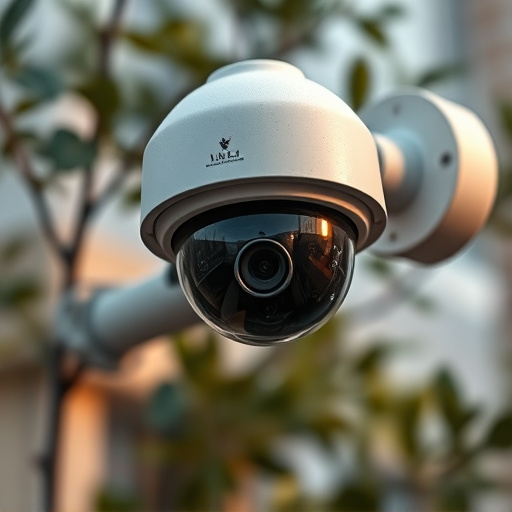Outdoor fake cameras with infrared sensors mimic real cameras by detecting heat signatures in low-visibility conditions like darkness or fog, enhancing security and deterring crime. For optimal functionality and realism, mount these cameras 5 to 10 feet (1.5 to 3 meters) above ground level, adjusting for environment factors like vegetation. Strategic placement at elevated heights improves field of view, line of sight, and area coverage while durable, weatherproof designs ensure long-term performance. Key considerations include optimal installation height and choosing robust equipment for effective outdoor surveillance.
In the realm of outdoor security, fake camera infrared sensors are gaining traction as innovative game changers. This article explores the intricate world of these devices, providing insights into their operation and diverse applications. From understanding the technology behind them to selecting the optimal height for outdoor fake camera installation, we delve into the benefits and considerations that make them a popular choice in today’s digital era. Discover how these sensors enhance security while offering cost-effective solutions.
- Understanding Fake Camera Infrared Sensors: How They Work and Their Applications
- Choosing the Right Height for Outdoor Fake Camera Installation
- Benefits and Considerations for Using Fake Cameras with Infrared Sensors in Outdoor Spaces
Understanding Fake Camera Infrared Sensors: How They Work and Their Applications
Fake camera infrared sensors, often used in outdoor security systems, mimic genuine cameras’ capabilities by employing special LEDs to detect and respond to heat signatures. Unlike traditional visible-light cameras that rely on reflected light, these sensors operate in the infrared spectrum, making them effective in low-visibility conditions like darkness or heavy fog. This technology is particularly useful for installations at optimal heights, typically between 10 to 20 feet (3 to 6 meters), where they can capture clear images and detect movement effectively.
Applications range from residential security to commercial and industrial surveillance. In outdoor settings, fake camera infrared sensors act as powerful deterrents against crime, as potential intruders are made aware that they’re being watched. They also play a crucial role in wildlife monitoring and research, allowing scientists to study animal behavior without disturbing their natural habitats.
Choosing the Right Height for Outdoor Fake Camera Installation
When planning an outdoor fake camera installation, selecting the optimal height is crucial for both functionality and realism. Typically, mounting the fake camera at a height similar to real security cameras is recommended. This usually means placing it between 5 to 10 feet (1.5 to 3 meters) above ground level. At this elevation, the camera can effectively cover a broad area without appearing overly suspicious or easily reachable for potential intruders.
Consideration should also be given to the specific environment and surroundings. For instance, in areas with tall vegetation or trees, positioning the fake camera slightly higher can help ensure it remains visible and unobstructed. Conversely, in open spaces with limited vertical obstacles, a lower mounting height might be more suitable to blend in with the surroundings while still providing adequate line-of-sight for monitoring.
Benefits and Considerations for Using Fake Cameras with Infrared Sensors in Outdoor Spaces
Using fake cameras equipped with infrared sensors in outdoor spaces offers several advantages for security and surveillance. One of the key benefits is their ability to operate effectively in low-light conditions, making them ideal for nighttime monitoring or areas with limited natural light. The infrared technology allows these cameras to detect heat signatures, enhancing their effectiveness in identifying and tracking movement, even in complete darkness. This feature is particularly useful for outdoor applications where traditional visible-light cameras might struggle.
When considering outdoor installations, the placement height of fake cameras is crucial. Opting for higher installation heights increases the camera’s field of view and line of sight, ensuring comprehensive coverage of the target area. This strategic positioning allows for a broader detection range and better visibility, making it an essential consideration for effective surveillance. Additionally, weatherproof designs are recommended to safeguard the equipment from environmental elements, ensuring longevity and consistent performance.
Infrared (IR) sensors are a valuable addition to outdoor fake camera systems, offering enhanced security and surveillance capabilities. By understanding how these fake camera IR sensors operate and selecting the optimal installation height for your outdoor spaces, you can maximize their benefits. The advantages of using fake cameras with IR sensors include improved night vision, motion detection accuracy, and the ability to capture clear images in various lighting conditions. When planning an Outdoor Fake Camera Installation Height, consider factors like lighting, area coverage, and desired field of view to ensure effective monitoring. With the right setup, these fake camera systems can provide a cost-effective and discreet security solution for any property.
